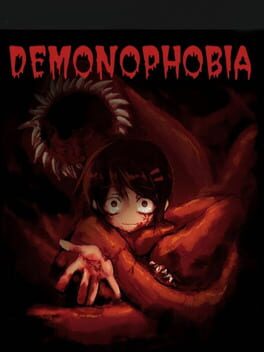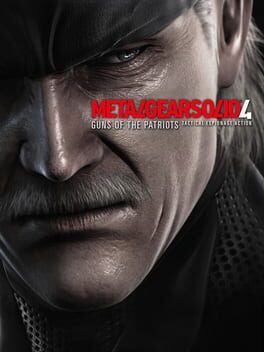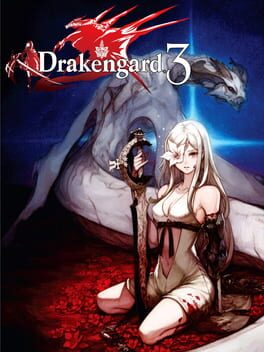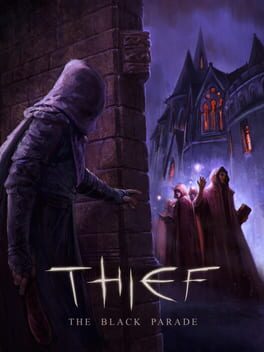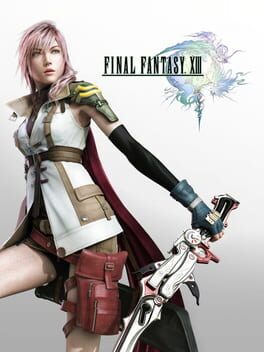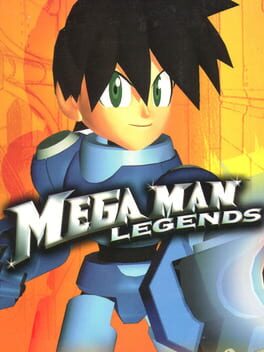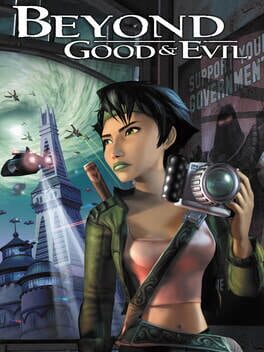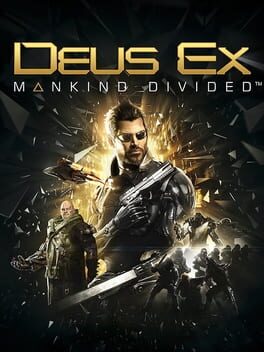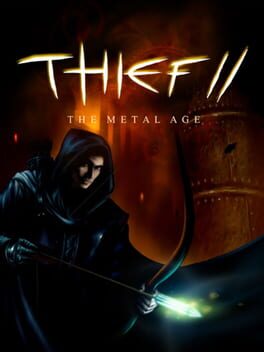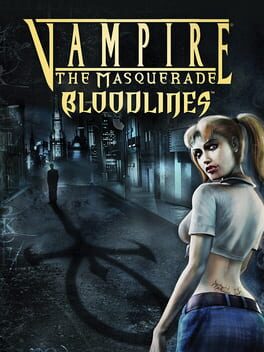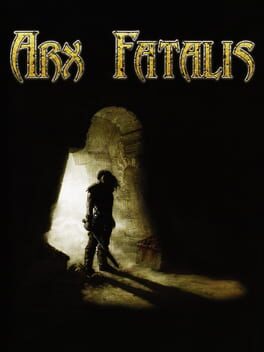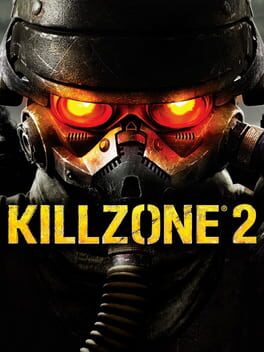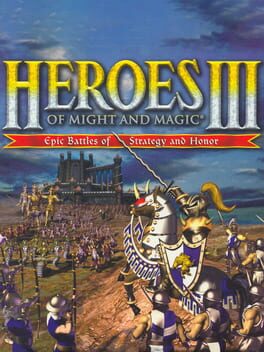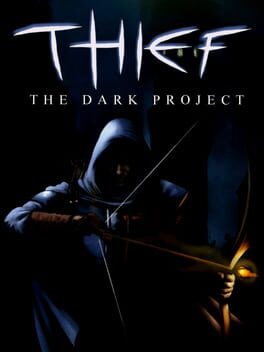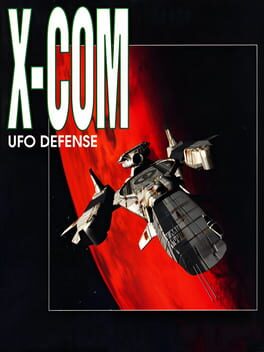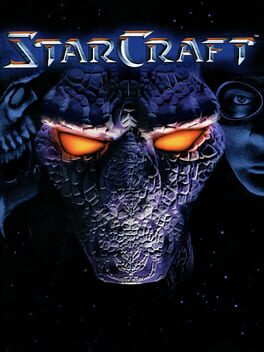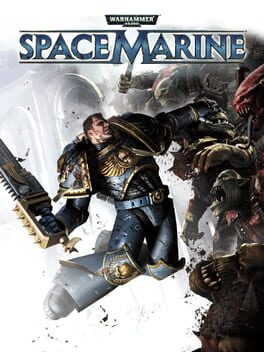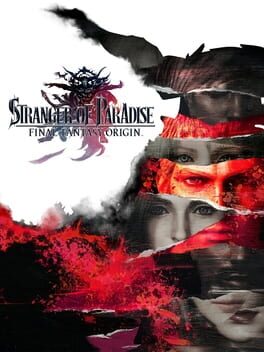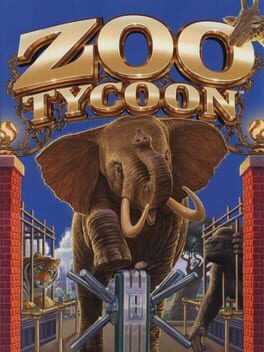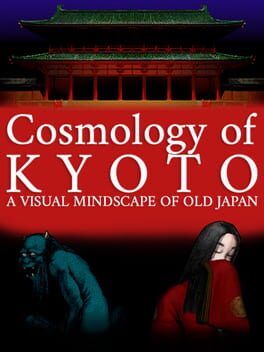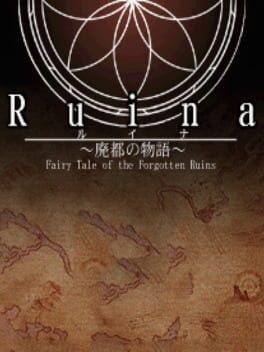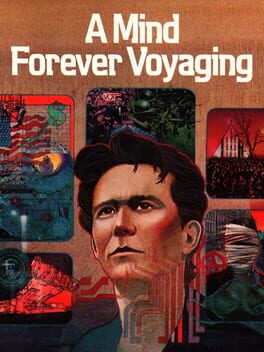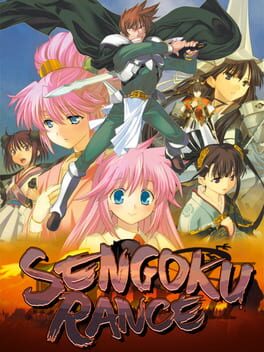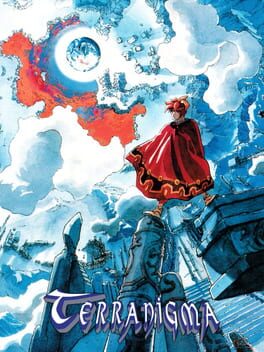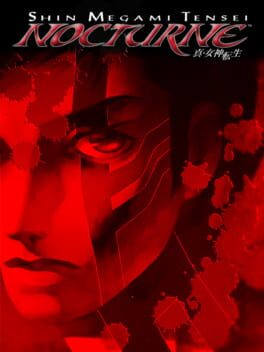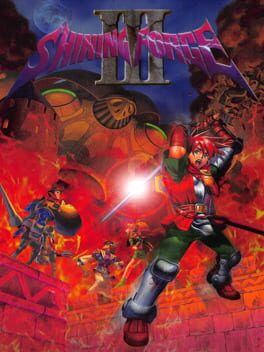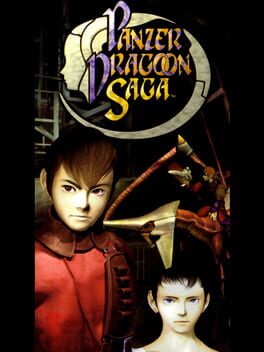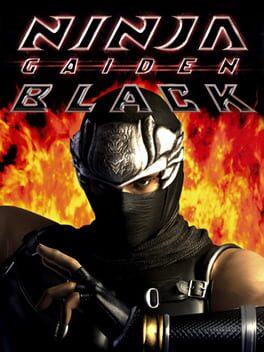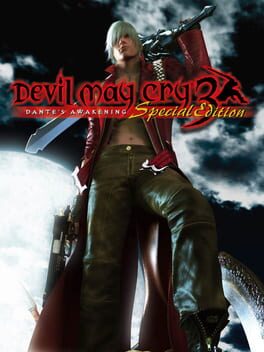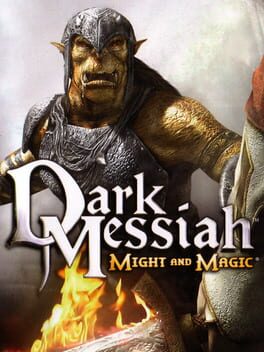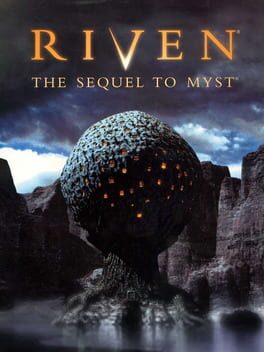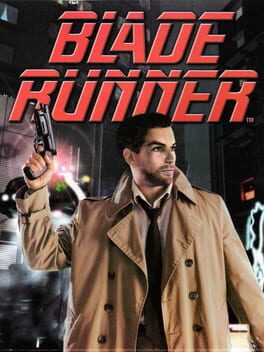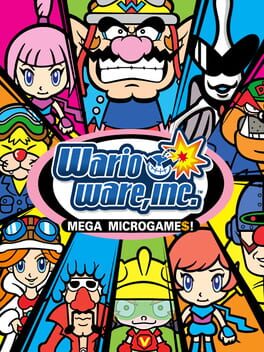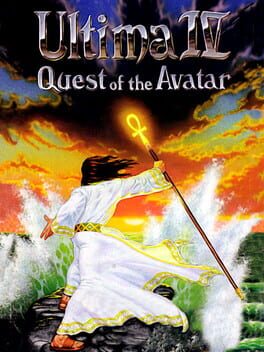110 reviews liked by babyclav
Super Metroid
1994
You know what? This isn’t just Super Metroid. This is Superb Metroid!
Despite having played several other metroidvanias in the past, I never actually tried to delve into one of the franchises that gave name to the genre, mostly because at the time I had a general avoidance of older games due to thinking they could have “aged poorly”…
But here’s the kicker! That past version of me from 2021/2022? HE IS FUCKING GONE (for the most part)! And it’s about time I came back to a genre that I was obsessed with in the past in some capacity, by going all the way back to the game that started it all!
The NES, short for Nintendo Entertainment System, is a video game console that, while I admire it, I don’t really like the idea of going all the way back to actually playing those games more than theorizing about them, the biggest reason is that for some of the more well known titles in the NES, looking back at them with the power of hindsight, though not as obvious as it is with franchises like Ultima, most of them just planted the seeds for what would grow into full blown trees with later entries, some of them ended up growing fast enough that they are still fairly solid like Castlevania and Super Mario Bros, but for others like Final Fantasy or Metroid… Yeah, I’ll pass.
And speaking of Metroid, its seed would eventually grow, but only in the NES’s successor for the next generation, the Super Nintendo, however, the seed that had grown into a small sprout with Metroid 2 on the Game Boy, would very suddenly grow into a Big FuckingGun Tree, one so big that several people would eventually try their hands at getting as many fruits from there as humanly possible in a short amount of time, memorizing everything about the tree and finding out the most effective way to get through each branch and collect the most fruits as fast as they could, and to this day people still try their hands at such task, AKA speedrunning. But if that wasn’t enough, that tree would go on to inspire many, many other gardeners (or developers) to try and plant trees inspired by that one, even creating an entire genre (alongside Castlevania: Symphony of the Night) called Metroidvania. And yet, even if we try to ignore this game’s long-lasting cultural impact within gaming, this is still one of the medium’s finest touchstone classics.
But what makes Super Metroid so compelling in the first place? Well, there are many reasons for why, and by many, I do mean it.
Crateria: A Strong Introduction
As soon as Samus touch its foot on Zebes for the second first time, the game immediately manages to instill both a sense of curiosity and fear on the player, curiosity as it makes the player hooked and eager to explore this wonderful “new” planet, touching on the human desire to explore new worlds, and fear as the place seems completely empty of any life, as a foreboding track plays in the background, further accentuating the feeling of exploring the ruins of a desolate planet completely unknown to the player, not helped by the fact Samus just escaped from Ridley invading a research station to steal the Baby Metroid there, so on top of that there’s a sense of something lurking around in the shadows, waiting for your presence to then attack you. That’s until you get the Morph Ball where the first game ended, and something like that does in fact happen, and what was once ridded from life is now filled to the Brinstar brim with enemies ready to kill anything potentially invading Zebes.
Super Metroid nailed the introduction so hard it could probably pierce through marble pillars, not only by introducing some of the fundamental aspects of the core gameplay loop to the player, but also by excellently establishing Zebes as a setting in every way imaginable, but especially gameplay and presentation. And speaking of the latter…
Brinstar: A Phenomenal Presentation and Atmosphere
As it can be noticed in the first ten minutes of the game, the presentation is amazing!
First of all, this is one of the most visually impressive in the SNES, and that’s saying a lot. The graphical leap of the Super Nintendo, going from a 8-bit to a 16-bit console, really allowed the developers to bring Edson Samus Arantes, Zebes and its denizens to full life here, with the colorful yet dimly lit colors giving an extra edge to Samus and especially to the enemies, Ridley and Mother Brain especially look even more alien and menacing than ever, and every area standout from one another due to their unique environmental detail along with their stark color palette, there’s a reason why most renditions of Metroid’s most iconic characters, both within and outwith the franchise itself, use their Super renditions as their main source of inspiration for their look. And soundwise it’s also great, having a mix of eerily ambient tunes to accompany this game’s most atmospheric moments and catchy upbeat songs that complement this game’s more action-focused moments while keeping the player going forward.
All of this combined makes for one hell of an atmosphere, one of feeling alone in a stranded alien planet while everything in there tries to murder you, and that’s what draws us into exploring those alien worlds, isn’t it? The idea of exploring worlds that would seem impossible to do otherwise in real life, ones that seem completely out of the ordinary, and then trying to get as much out of exploring it as possible, whether by understanding the inner workings of there or simply gathering every possible loot you can get…
Norfair: A Powerhouse of Mobility and Murder
But normal human beings can’t feasibly traverse the entirety of Earth itself, let alone a planet as dangerous as Zebes, they would probably die in one way or another.
Don’t worry, Samus Aran got you covered, and with some damn fine movement at that. Since we are talking about one of the games that established the Metroidvania, you slowly unlock Samus’s true power instead of immediately getting everything right off the bat, and with every major upgrade unlocked, it opens up a slew of new possibilities for you to go through every crevice of Zebes, and by the time you reach Mother Brain, you will have become a invincible god. There is one ability though that is available from the start that can fundamentally change the way you approach the entire game:
The Wall Jump
Where as in other games from the time like Mega Man X the wall jump is as simple as pressing the jump button against a wall repeatedly to climb up that wall, in Super Metroid that requires mastery, as you must be spin jumping against a wall and then go to the opposite direction of that wall and press the jump button WITH THE RIGHT TIMING! It’s incredibly satisfying to master the usage of wall jump, as it allows for the player to sequence break through levels that not only accommodate, but even encourage learning how to properly use the wall jump. And that’s not even the only hidden movement tech in the game either, there is also the Shine Spark which allows you to jump insane heights as long as you get enough momentum to use the speed booster.
And speaking of the upgrades themselves, they are all really fun to use in their own right. As I mentioned in the first paragraph of this section, they all open up new possibilities for uncovering secret upgrades in incredibly rewarding ways, but aside from that, a lot of upgrades make traversing the map incredibly fun as well, as you can just blast through every area at a quick pace to make backtracking engaging, with notable ones being the aforementioned Speed Booster which allows you to run at a insane speed as long as you gather enough momentum through running in a large straight line, and the grappling hook which, when latched onto specific blocks, will allow Samus to launch herself from larger gaps.
All of this lends for some of metroidvania’s, heck, even some of 2D platformers’s finest controls and movement ever seen, movement which many metroidvanias still haven’t quite matched. But here’s the kicker…
Maridia: An Incredible World and Level Design Chock Full of Secrets
You can’t simply make a game with controls as good as these without putting them to good use, don’t get me wrong, you can literally do that, but that would make it a pretty lackluster experience, wouldn’t it (isn’t that right Jedi Academy)? Here’s where I finally talk about the elephant in the room:
The level design
It has some of the most intricate level design ever seen. It manages to be both linear and open-ended at the same time, never feeling too confusing and always being pretty clear where to go but also open enough to encourage you to explore it to its fullest, and damn there is a lot to unpack here, there are a ton of hidden collectables, and by ton I mean so many that by the time I had beaten the game, I hadn’t even got 60% of progress in the game, and it was still fun as hell to find out all the upgrades I did find, since the game forces the player to fully learn how to best use every upgrade and movement tech and will make many concessions to the 100% Nutcases who want to get the most out of exploring Zebes.
Now about that “linear and open-ended at the same time” stuff, despite how big its levels are in comparison to any contemporary released at the time, the game still manages to communicate to the player where to go really well, not only in how the game generally teases you on what's to come with all the gateways (literal or figurative) locked behind different upgrades, but also in how the pathways are always cleverly designed in a way that the player still ends up knowing where to go but becomes willing to engage with what’s outside the main path towards the next major boss/upgrade, and even when you need to use a bomb to progress through, it’s often fairly logical where you need to use the bomb, all of that without ever explicitly telling you where to go (unlike some other titles in the same franchise).
Actually, I was going to reach the ultimate conclusion here but…
Wrecked Ship: A Interactive Painting Disguised as a Game
The reality is that thinking about Super Metroid started to slowly lead into a path that at first I wasn’t willing to consider talking about at all, but now I just cannot stop but think about this:
What separates video games from mediums like cinema, literature and music?
The most obvious answer would be how a video game actively forced the viewer to engage with the work in a tactile level, and thus not only absorbing its sights and sounds, but also participating in the game world in some form or capacity, and a game will have roadblocks that will test the player both physically and mentally. What I think best describes video games as a medium though is that the developer is essentially a painter, the game itself is one big painting carefully made so that it portrays everything they want to portray in there, while leaving enough space for the viewer to play the role of a different painter trying to find new ways to fill in the blanks both literally, drawing new things and leaving those paintings marked with your own ideas, or figuratively, soaking up what’s already there and trying to find meaning to it.
What does all of this have to do with Super Metroid though? Well, the artistry in the game lies on how its world is structured, if you just look at it you can beat the game just fine, but the real deal is in trying to understand the inner workings of what’s present in that painting, or, to put it better, trying to get the most out of exploring every crevice in the game to then reach an ultimate conclusion to what’s actually there, and that also seeps into another major aspect of this game, its visual “storytelling”, where nothing outside of the opening cutscene is explicitly told to you, and because of that, this lends an extra layer of mystery to planet Zebes, as even after leaving it, it’s still unclear how the alien lifeforms found there actually behave, and then there’s also a sense of loneliness whenever exploring the planet as Samus doesn’t speak, and neither does the enemies as they are too busy trying to murder you, and then you get to Tourian and it’s probably, in my personal opinion, one of the most disquieting moments I’ve ever seen in any Super Nintendo game outside of Earthbound, as Samus trudge through the mechanical lair of Mother Brain, and hears a unfathomably alien ambient song, and as you think she is destroyed, she brings her true form to life, an demonically terrifying amalgamation of flesh and steel.
Tourian: A Definitive Conclusion
Super Metroid is one of the best and most influential games of all time, that should be obvious by now, but the reality is that not many games have even attempted to replicate most of what makes it such a iconic game in the first place, even other titles in the same franchise couldn’t quite capture what made Super Metroid the SUPER Metroid, and even after the release of so many great metroidvanias like Guacamelee 2 and Yoku’s Island Express, games that brought their own new spin to the genre by focusing on a amazing and varied combat system or even completely redefining how we traverse worlds in metroidvanias, this one is still one of the very best, I mean, there’s a reason why people have done so many speedruns of this game (and Castlevania: Symphony of the Night).
And if you somehow still haven’t played this, why are you slacking off from playing it?
Despite having played several other metroidvanias in the past, I never actually tried to delve into one of the franchises that gave name to the genre, mostly because at the time I had a general avoidance of older games due to thinking they could have “aged poorly”…
But here’s the kicker! That past version of me from 2021/2022? HE IS FUCKING GONE (for the most part)! And it’s about time I came back to a genre that I was obsessed with in the past in some capacity, by going all the way back to the game that started it all!
The NES, short for Nintendo Entertainment System, is a video game console that, while I admire it, I don’t really like the idea of going all the way back to actually playing those games more than theorizing about them, the biggest reason is that for some of the more well known titles in the NES, looking back at them with the power of hindsight, though not as obvious as it is with franchises like Ultima, most of them just planted the seeds for what would grow into full blown trees with later entries, some of them ended up growing fast enough that they are still fairly solid like Castlevania and Super Mario Bros, but for others like Final Fantasy or Metroid… Yeah, I’ll pass.
And speaking of Metroid, its seed would eventually grow, but only in the NES’s successor for the next generation, the Super Nintendo, however, the seed that had grown into a small sprout with Metroid 2 on the Game Boy, would very suddenly grow into a Big Fucking
But what makes Super Metroid so compelling in the first place? Well, there are many reasons for why, and by many, I do mean it.
Crateria: A Strong Introduction
As soon as Samus touch its foot on Zebes for the second first time, the game immediately manages to instill both a sense of curiosity and fear on the player, curiosity as it makes the player hooked and eager to explore this wonderful “new” planet, touching on the human desire to explore new worlds, and fear as the place seems completely empty of any life, as a foreboding track plays in the background, further accentuating the feeling of exploring the ruins of a desolate planet completely unknown to the player, not helped by the fact Samus just escaped from Ridley invading a research station to steal the Baby Metroid there, so on top of that there’s a sense of something lurking around in the shadows, waiting for your presence to then attack you. That’s until you get the Morph Ball where the first game ended, and something like that does in fact happen, and what was once ridded from life is now filled to the Brinstar brim with enemies ready to kill anything potentially invading Zebes.
Super Metroid nailed the introduction so hard it could probably pierce through marble pillars, not only by introducing some of the fundamental aspects of the core gameplay loop to the player, but also by excellently establishing Zebes as a setting in every way imaginable, but especially gameplay and presentation. And speaking of the latter…
Brinstar: A Phenomenal Presentation and Atmosphere
As it can be noticed in the first ten minutes of the game, the presentation is amazing!
First of all, this is one of the most visually impressive in the SNES, and that’s saying a lot. The graphical leap of the Super Nintendo, going from a 8-bit to a 16-bit console, really allowed the developers to bring Edson Samus Arantes, Zebes and its denizens to full life here, with the colorful yet dimly lit colors giving an extra edge to Samus and especially to the enemies, Ridley and Mother Brain especially look even more alien and menacing than ever, and every area standout from one another due to their unique environmental detail along with their stark color palette, there’s a reason why most renditions of Metroid’s most iconic characters, both within and outwith the franchise itself, use their Super renditions as their main source of inspiration for their look. And soundwise it’s also great, having a mix of eerily ambient tunes to accompany this game’s most atmospheric moments and catchy upbeat songs that complement this game’s more action-focused moments while keeping the player going forward.
All of this combined makes for one hell of an atmosphere, one of feeling alone in a stranded alien planet while everything in there tries to murder you, and that’s what draws us into exploring those alien worlds, isn’t it? The idea of exploring worlds that would seem impossible to do otherwise in real life, ones that seem completely out of the ordinary, and then trying to get as much out of exploring it as possible, whether by understanding the inner workings of there or simply gathering every possible loot you can get…
Norfair: A Powerhouse of Mobility and Murder
But normal human beings can’t feasibly traverse the entirety of Earth itself, let alone a planet as dangerous as Zebes, they would probably die in one way or another.
Don’t worry, Samus Aran got you covered, and with some damn fine movement at that. Since we are talking about one of the games that established the Metroidvania, you slowly unlock Samus’s true power instead of immediately getting everything right off the bat, and with every major upgrade unlocked, it opens up a slew of new possibilities for you to go through every crevice of Zebes, and by the time you reach Mother Brain, you will have become a invincible god. There is one ability though that is available from the start that can fundamentally change the way you approach the entire game:
The Wall Jump
Where as in other games from the time like Mega Man X the wall jump is as simple as pressing the jump button against a wall repeatedly to climb up that wall, in Super Metroid that requires mastery, as you must be spin jumping against a wall and then go to the opposite direction of that wall and press the jump button WITH THE RIGHT TIMING! It’s incredibly satisfying to master the usage of wall jump, as it allows for the player to sequence break through levels that not only accommodate, but even encourage learning how to properly use the wall jump. And that’s not even the only hidden movement tech in the game either, there is also the Shine Spark which allows you to jump insane heights as long as you get enough momentum to use the speed booster.
And speaking of the upgrades themselves, they are all really fun to use in their own right. As I mentioned in the first paragraph of this section, they all open up new possibilities for uncovering secret upgrades in incredibly rewarding ways, but aside from that, a lot of upgrades make traversing the map incredibly fun as well, as you can just blast through every area at a quick pace to make backtracking engaging, with notable ones being the aforementioned Speed Booster which allows you to run at a insane speed as long as you gather enough momentum through running in a large straight line, and the grappling hook which, when latched onto specific blocks, will allow Samus to launch herself from larger gaps.
All of this lends for some of metroidvania’s, heck, even some of 2D platformers’s finest controls and movement ever seen, movement which many metroidvanias still haven’t quite matched. But here’s the kicker…
Maridia: An Incredible World and Level Design Chock Full of Secrets
You can’t simply make a game with controls as good as these without putting them to good use, don’t get me wrong, you can literally do that, but that would make it a pretty lackluster experience, wouldn’t it (isn’t that right Jedi Academy)? Here’s where I finally talk about the elephant in the room:
The level design
It has some of the most intricate level design ever seen. It manages to be both linear and open-ended at the same time, never feeling too confusing and always being pretty clear where to go but also open enough to encourage you to explore it to its fullest, and damn there is a lot to unpack here, there are a ton of hidden collectables, and by ton I mean so many that by the time I had beaten the game, I hadn’t even got 60% of progress in the game, and it was still fun as hell to find out all the upgrades I did find, since the game forces the player to fully learn how to best use every upgrade and movement tech and will make many concessions to the 100% Nutcases who want to get the most out of exploring Zebes.
Now about that “linear and open-ended at the same time” stuff, despite how big its levels are in comparison to any contemporary released at the time, the game still manages to communicate to the player where to go really well, not only in how the game generally teases you on what's to come with all the gateways (literal or figurative) locked behind different upgrades, but also in how the pathways are always cleverly designed in a way that the player still ends up knowing where to go but becomes willing to engage with what’s outside the main path towards the next major boss/upgrade, and even when you need to use a bomb to progress through, it’s often fairly logical where you need to use the bomb, all of that without ever explicitly telling you where to go (unlike some other titles in the same franchise).
Actually, I was going to reach the ultimate conclusion here but…
Wrecked Ship: A Interactive Painting Disguised as a Game
The reality is that thinking about Super Metroid started to slowly lead into a path that at first I wasn’t willing to consider talking about at all, but now I just cannot stop but think about this:
What separates video games from mediums like cinema, literature and music?
The most obvious answer would be how a video game actively forced the viewer to engage with the work in a tactile level, and thus not only absorbing its sights and sounds, but also participating in the game world in some form or capacity, and a game will have roadblocks that will test the player both physically and mentally. What I think best describes video games as a medium though is that the developer is essentially a painter, the game itself is one big painting carefully made so that it portrays everything they want to portray in there, while leaving enough space for the viewer to play the role of a different painter trying to find new ways to fill in the blanks both literally, drawing new things and leaving those paintings marked with your own ideas, or figuratively, soaking up what’s already there and trying to find meaning to it.
What does all of this have to do with Super Metroid though? Well, the artistry in the game lies on how its world is structured, if you just look at it you can beat the game just fine, but the real deal is in trying to understand the inner workings of what’s present in that painting, or, to put it better, trying to get the most out of exploring every crevice in the game to then reach an ultimate conclusion to what’s actually there, and that also seeps into another major aspect of this game, its visual “storytelling”, where nothing outside of the opening cutscene is explicitly told to you, and because of that, this lends an extra layer of mystery to planet Zebes, as even after leaving it, it’s still unclear how the alien lifeforms found there actually behave, and then there’s also a sense of loneliness whenever exploring the planet as Samus doesn’t speak, and neither does the enemies as they are too busy trying to murder you, and then you get to Tourian and it’s probably, in my personal opinion, one of the most disquieting moments I’ve ever seen in any Super Nintendo game outside of Earthbound, as Samus trudge through the mechanical lair of Mother Brain, and hears a unfathomably alien ambient song, and as you think she is destroyed, she brings her true form to life, an demonically terrifying amalgamation of flesh and steel.
Tourian: A Definitive Conclusion
Super Metroid is one of the best and most influential games of all time, that should be obvious by now, but the reality is that not many games have even attempted to replicate most of what makes it such a iconic game in the first place, even other titles in the same franchise couldn’t quite capture what made Super Metroid the SUPER Metroid, and even after the release of so many great metroidvanias like Guacamelee 2 and Yoku’s Island Express, games that brought their own new spin to the genre by focusing on a amazing and varied combat system or even completely redefining how we traverse worlds in metroidvanias, this one is still one of the very best, I mean, there’s a reason why people have done so many speedruns of this game (and Castlevania: Symphony of the Night).
And if you somehow still haven’t played this, why are you slacking off from playing it?
Yume Nikki
2004
Yume Nikki is one of the most important games ever despite its seemingly small scope, paving the way for several RPG Maker games inspired by it in one way or another, as well as one of the most iconic surrealist games of all time, and for very good reasons.
In several ways, Yume Nikki isn’t really meant to be understood in any conventional way, nor is it meant to be played with the mindset of expecting a conventional game.
Yume Nikki as a game strips down the gameplay down to the very basic cycle of walking around like an idiot, soaking up in its atmosphere and occasionally finding something new, though the main difference is that where as in other games, such as Super Metroid, the reward for exploring the map to its fullest are upgrades that make you more powerful, finding new areas is the reward here, with some of the “power ups” merely changing the look of Madotsuki and nothing else (while others aid in traversing the map), but in the end they are still pretty cool.
But what truly matters in the game is what’s present (and what’s NOT present) in each location you find. Mind-bending landscapes where the borderline nonsensical reigns over anything else, seemingly endless black voids where surreal entities and abstract images coexist, and even the (arguably) more grounded places manage to feel just as strange as everything else due to their haunting atmosphere, helped by a stellar soundtrack which really sells the vibe of every place, all of that make the game arguably more harrowing more so by virtue of exploring a world so uniquely alien and terrifying as Madotsuki’s perturbed mind than that of an actual threat hiding around the corner. But eventually you start getting accustomed to the world’s idiosyncrasies, and consequently starts to get a better hang of the environments both based on their map layouts and their sights and sounds (for better or for worse), and the game itself is absolutely ripe with imagery and symbolism, and thus, much like the best surrealist and abstract art, it’s up to you to find meaning in everything you find throughout the game, and that’s the magic of Yume Nikki, isn’t it? Finding sense in everything found throughout the seemingly endless dimensions of abstract images, and piecing together all of it to find a meaning to Yume Nikki, or maybe not doing that at all and just soaking up all of it as it is and leaving it at that, that works too.
Now you may be wondering why did I rate this game only a mere three stars out of five despite everything I said so far?
SHORT ANSWER: IT’S BORING! Or rather, it BECOMES boring.
Long answer: When you first start, everything seems and feels extremely bizarre, and thus, it ends up being incredibly compelling and rewarding to explore each location and sometimes find new things, helped a bunch by other secret places and events that are entirely optional, making your first time reaching those moments really friggin special.
HOWEVER, it does get tiring when you have to do that to accomplish a goal as dull as “Collect 24 Effects”, especially with the slow as a snail speed of Madotsuki, and no, the Bicycle doesn’t make this much better. What starts as engrossing and bewildering starts to become annoying and exhaustive to go through, and I’ll admit I used a guide to find out how to get the rest of the Effects after I got 14 of them or so, since some of them are fairly tricky to find as well, which I would appreciate more if not for the aforementioned slow speed. Pro tip: Get the Bicycle ASAP, and then start using the Bicycle Glitch to get through most areas as quickly as possible.
I get that most people will look past this and still adore it for everything else, and I can perfectly see why, but when the whole gameplay loop involves something as mundane as walking and nothing else, that one flaw starts to get on me. And to me, the game manages to be boring both intentionally and unintentionally, and the latter part is the issue.
In summary, I do really admire what this game does (and did to indie gaming as a whole alongside Cave Story), it is an absolute piece of art that broke the boundaries of what video games could be at the time, to the point where several games were inspired by it, including fan games like the famous Yume 2kki or .flow… However, I could also say something similar about other games I far prefer to play over Yume Nikki.
TL;DR - I admire the hell of what Kikiyama did, but I don’t like actually playing it, and I’d rather just watch about it than playing it, but I don’t know, maybe YOU will find those “flaws” as something that adds to the experience of playing Yume Nikki, and I'm fine with that.
Edit: Who the fuck changed the cover art in IGDB? Come on bro the other cover art was so awesome, but now it's replaced with this dull as a plank stuff!
In several ways, Yume Nikki isn’t really meant to be understood in any conventional way, nor is it meant to be played with the mindset of expecting a conventional game.
Yume Nikki as a game strips down the gameplay down to the very basic cycle of walking around like an idiot, soaking up in its atmosphere and occasionally finding something new, though the main difference is that where as in other games, such as Super Metroid, the reward for exploring the map to its fullest are upgrades that make you more powerful, finding new areas is the reward here, with some of the “power ups” merely changing the look of Madotsuki and nothing else (while others aid in traversing the map), but in the end they are still pretty cool.
But what truly matters in the game is what’s present (and what’s NOT present) in each location you find. Mind-bending landscapes where the borderline nonsensical reigns over anything else, seemingly endless black voids where surreal entities and abstract images coexist, and even the (arguably) more grounded places manage to feel just as strange as everything else due to their haunting atmosphere, helped by a stellar soundtrack which really sells the vibe of every place, all of that make the game arguably more harrowing more so by virtue of exploring a world so uniquely alien and terrifying as Madotsuki’s perturbed mind than that of an actual threat hiding around the corner. But eventually you start getting accustomed to the world’s idiosyncrasies, and consequently starts to get a better hang of the environments both based on their map layouts and their sights and sounds (for better or for worse), and the game itself is absolutely ripe with imagery and symbolism, and thus, much like the best surrealist and abstract art, it’s up to you to find meaning in everything you find throughout the game, and that’s the magic of Yume Nikki, isn’t it? Finding sense in everything found throughout the seemingly endless dimensions of abstract images, and piecing together all of it to find a meaning to Yume Nikki, or maybe not doing that at all and just soaking up all of it as it is and leaving it at that, that works too.
Now you may be wondering why did I rate this game only a mere three stars out of five despite everything I said so far?
SHORT ANSWER: IT’S BORING! Or rather, it BECOMES boring.
Long answer: When you first start, everything seems and feels extremely bizarre, and thus, it ends up being incredibly compelling and rewarding to explore each location and sometimes find new things, helped a bunch by other secret places and events that are entirely optional, making your first time reaching those moments really friggin special.
HOWEVER, it does get tiring when you have to do that to accomplish a goal as dull as “Collect 24 Effects”, especially with the slow as a snail speed of Madotsuki, and no, the Bicycle doesn’t make this much better. What starts as engrossing and bewildering starts to become annoying and exhaustive to go through, and I’ll admit I used a guide to find out how to get the rest of the Effects after I got 14 of them or so, since some of them are fairly tricky to find as well, which I would appreciate more if not for the aforementioned slow speed. Pro tip: Get the Bicycle ASAP, and then start using the Bicycle Glitch to get through most areas as quickly as possible.
I get that most people will look past this and still adore it for everything else, and I can perfectly see why, but when the whole gameplay loop involves something as mundane as walking and nothing else, that one flaw starts to get on me. And to me, the game manages to be boring both intentionally and unintentionally, and the latter part is the issue.
In summary, I do really admire what this game does (and did to indie gaming as a whole alongside Cave Story), it is an absolute piece of art that broke the boundaries of what video games could be at the time, to the point where several games were inspired by it, including fan games like the famous Yume 2kki or .flow… However, I could also say something similar about other games I far prefer to play over Yume Nikki.
TL;DR - I admire the hell of what Kikiyama did, but I don’t like actually playing it, and I’d rather just watch about it than playing it, but I don’t know, maybe YOU will find those “flaws” as something that adds to the experience of playing Yume Nikki, and I'm fine with that.
Edit: Who the fuck changed the cover art in IGDB? Come on bro the other cover art was so awesome, but now it's replaced with this dull as a plank stuff!
Demonophobia
2008
Drakengard 3
2013
Dragon's Dogma II
2024
I'm not done the game yet or anything, but I've done the main quest and a bunch of side quests, so I felt like writing up about it.
As much as I decently enjoyed dragons dogma 1 it was definitely an extremely annoying game with jank overload and just the most egregious traveling ever even though I was playing dark arisen I didn't even know the eternal ferrystone was a thing so most of it I was just playing normally. It has fine combat, but you get pretty busted pretty quick, and the game felt like it ended multiple times just to keep going.
This game very much ends a bit abruptly. Despite that, though, I enjoyed it a bit more being a more straightforward boss rather than a script fest. Dragons Dogma 2 has some great gameplay with a great sense of exploration. I know that people will dog on the enemy variety and how often you'll find hobgoblins, harpies, or bandits, yet I find the enemy variety to be quite good since they offer different changes to your playstyle. (I'm especially glad there's no evil eye) I hope this game reaches the group that finds games nowadays to be boring or the people who think devs don't make more bold games anymore.
Overall, I think this game shouldn't exist in a good way. I'm glad we got it even with its performance issues and use of microtransactions (which are extremely tame for microtransactions and the first game already used). I think it's worth playing, and there's a lot of secret substories you probably wouldn't know about and secret bosses you wouldn't find just doing the main story. Like the first game, there's way more to it than just killing the dragon. I recommend it.
As much as I decently enjoyed dragons dogma 1 it was definitely an extremely annoying game with jank overload and just the most egregious traveling ever even though I was playing dark arisen I didn't even know the eternal ferrystone was a thing so most of it I was just playing normally. It has fine combat, but you get pretty busted pretty quick, and the game felt like it ended multiple times just to keep going.
This game very much ends a bit abruptly. Despite that, though, I enjoyed it a bit more being a more straightforward boss rather than a script fest. Dragons Dogma 2 has some great gameplay with a great sense of exploration. I know that people will dog on the enemy variety and how often you'll find hobgoblins, harpies, or bandits, yet I find the enemy variety to be quite good since they offer different changes to your playstyle. (I'm especially glad there's no evil eye) I hope this game reaches the group that finds games nowadays to be boring or the people who think devs don't make more bold games anymore.
Overall, I think this game shouldn't exist in a good way. I'm glad we got it even with its performance issues and use of microtransactions (which are extremely tame for microtransactions and the first game already used). I think it's worth playing, and there's a lot of secret substories you probably wouldn't know about and secret bosses you wouldn't find just doing the main story. Like the first game, there's way more to it than just killing the dragon. I recommend it.
Final Fantasy XIII
2009
Yume Nikki
2004
37 lists liked by babyclav
by HazeRedux |
1 Games
by Rogueliker |
11 Games
by Rogueliker |
30 Games
by Hattori |
36 Games
by RedHexapus |
201 Games
by akanta |
250 Games
by railgun233 |
55 Games
by vragnar2 |
220 Games
by Pangburn |
113 Games


